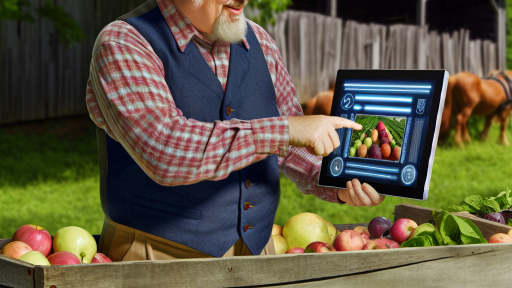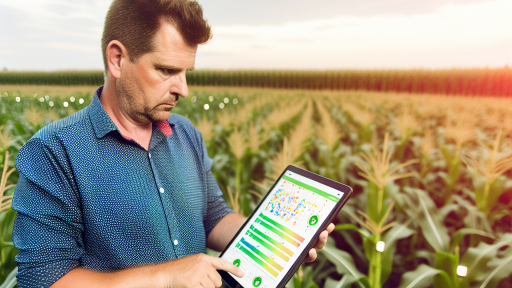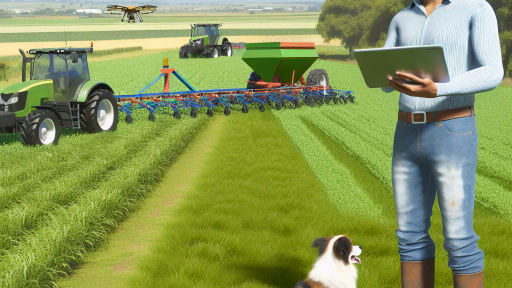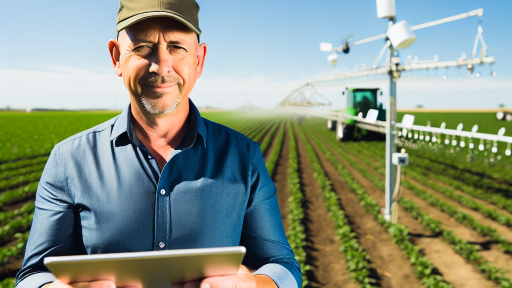Introduction to Crop Monitoring Sensors and Their Importance
Crop monitoring sensors play a crucial role in modern agriculture.
They enhance productivity and sustainability by providing essential data.
Farmers can use this data to make informed decisions regarding their crops.
Additionally, these sensors help in identifying potential issues early.
Maintaining crop health relies on precise monitoring technologies.
Enhancing Precision Agriculture
Precision agriculture utilizes data to optimize farming practices.
Crop monitoring sensors gather real-time information about field conditions.
By applying this data, farmers can allocate resources more efficiently.
This leads to reduced waste and increased yields.
Supporting Sustainable Practices
Sustainability is becoming a priority in agricultural practices.
Crop monitoring sensors help reduce environmental impacts.
They enable farmers to minimize excessive use of water and fertilizers.
As a result, crops can thrive without harming the ecosystem.
Facilitating Data-Driven Decisions
Data-driven decisions can significantly enhance crop management.
Crop monitoring sensors provide crucial insights on soil health.
Transform Your Agribusiness
Unlock your farm's potential with expert advice tailored to your needs. Get actionable steps that drive real results.
Get StartedThey monitor plant health and climate conditions over time.
This continuous feedback loop allows for timely actions to be taken.
Improving Crop Yield and Quality
Ultimately, crop monitoring sensors lead to better yields and quality.
Farmers benefit from higher profits due to optimized production methods.
Furthermore, consumers enjoy fresher and healthier produce.
These sensors are integral to the future of farming.
Types of Crop Monitoring Sensors: An Overview
Introduction to Crop Monitoring
Effective crop monitoring relies on various sensor technologies.
These technologies provide valuable data for agricultural management.
Farmers can enhance their decision-making processes using these sensors.
Soil Moisture Sensors
Soil moisture sensors measure the water content in the soil.
They help farmers determine optimal irrigation practices.
Moreover, they prevent overwatering, which can harm plant roots.
These sensors can take real-time readings for accurate data.
Temperature Sensors
Temperature sensors monitor ambient and soil temperatures.
They help identify ideal growing conditions for crops.
Additionally, farmers can predict frost events with this data.
Using temperature sensors can significantly enhance crop yield.
pH Sensors
Soil pH sensors assess the acidity or alkalinity of the soil.
This information is crucial for optimal nutrient availability.
By adjusting pH levels, farmers can enhance plant growth.
Regular monitoring can prevent nutrient deficiencies.
Nutrient Sensors
Nutrient sensors help evaluate soil nutrient levels.
They can detect essential nutrients like nitrogen and phosphorus.
Farmers can apply fertilizers accordingly to improve yields.
Showcase Your Farming Business
Publish your professional farming services profile on our blog for a one-time fee of $200 and reach a dedicated audience of farmers and agribusiness owners.
Publish Your ProfileThis data leads to more efficient use of resources.
Weather Stations
Integrated weather stations collect data on climatic conditions.
They monitor rainfall, humidity, and wind speed.
This information aids in planning planting and harvesting activities.
Farmers can also anticipate weather-related challenges.
Remote Sensing Technology
Remote sensing uses drones or satellites for crop monitoring.
This technology provides a broader view of field conditions.
It helps in mapping crop health and identifying pests.
Farmers can make informed decisions based on this analysis.
Comparative Benefits of Sensors
Each type of sensor provides unique advantages for crop monitoring.
Using multiple sensors together increases data accuracy.
This comprehensive data supports precise agricultural practices.
Overall, integrated sensor systems lead to improved crop management.
Soil Moisture Sensors: Measurement Techniques and Applications
Introduction to Soil Moisture Sensors
Soil moisture sensors play a crucial role in modern agriculture.
They help monitor the moisture levels in the soil effectively.
These sensors assist farmers in making informed irrigation decisions.
Additionally, they contribute to sustainable water management practices.
Measurement Techniques
Several techniques exist for measuring soil moisture.
These include capacitive, resistive, and time-domain reflectometry methods.
Capacitive sensors measure changes in capacitance related to moisture content.
Resistive sensors work by assessing the electrical resistance between two electrodes.
Time-domain reflectometry uses the time it takes for a signal to travel through the soil.
Each technique has strengths and weaknesses depending on application needs.
Capacitive Sensors
Capacitive sensors are popular due to their accuracy and reliability.
They are less affected by soil salinity compared to resistive sensors.
Moreover, they provide continuous readings for real-time monitoring.
Resistive Sensors
Resistive sensors are simple and cost-effective.
However, they can suffer from corrosion issues over time.
This limits their longevity and reliability in certain environments.
Time-Domain Reflectometry
Time-domain reflectometry delivers precise results.
This method is often used in research settings.
It measures volumetric water content in a non-destructive manner.
Applications of Soil Moisture Sensors
Farmers utilize soil moisture sensors for various applications.
They enable precise irrigation management.
This results in reduced water consumption and increased efficiency.
Additionally, sensors aid in crop health monitoring.
They help identify areas requiring additional nutrients or changes.
To Improve Irrigation Efficiency
Soil moisture sensors provide data-driven insights for irrigation scheduling.
Farmers can irrigate only when necessary, reducing water waste.
This practice enhances crop yield and quality over time.
Showcase Your Farming Business
Publish your professional farming services profile on our blog for a one-time fee of $200 and reach a dedicated audience of farmers and agribusiness owners.
Publish Your ProfileIn Crop Health Monitoring
Moisture levels directly influence crop health and growth rates.
By monitoring these levels, farmers can detect issues early.
This proactive approach allows for timely interventions.
Environmental Impact
Employing soil moisture sensors promotes environmental sustainability.
Farmers can minimize runoff and soil erosion through judicious watering.
This benefits not only their crops but the surrounding ecosystem.
Find Out More: The Role of Drones in Precision Agriculture
Climate Sensors: Monitoring Weather Conditions for Crop Management
Importance of Climate Sensors
Climate sensors play a vital role in modern agriculture.
They provide essential data for effective crop management.
Farmers can make informed decisions based on real-time weather information.
Key Types of Climate Sensors
Numerous climate sensors contribute to agricultural success.
These sensors can be categorized based on their functions.
- Temperature sensors monitor ambient temperatures.
- Humidity sensors track moisture levels in the air.
- Rainfall sensors measure precipitation amounts.
- Solar radiation sensors assess sunlight intensity.
Temperature Sensors
Temperature sensors provide crucial data for understanding growing conditions.
They help farmers determine the optimal planting times.
Additionally, they aid in frost protection measures.
These sensors often integrate with irrigation systems.
Humidity Sensors
Humidity sensors gauge moisture levels in the atmosphere.
They help in understanding evapotranspiration rates.
This information is critical for irrigation planning.
Proper humidity management enhances crop health and yields.
Rainfall Sensors
Rainfall sensors track the amount of rainfall in real-time.
This data assists farmers in scheduling irrigation effectively.
Furthermore, they help in soil moisture management.
Effective moisture tracking minimizes water wastage.
Solar Radiation Sensors
Solar radiation sensors measure sunlight exposure on crops.
Understanding light levels enhances photosynthesis management.
They inform farmers about shade requirements for plants.
This ensures crops receive optimal light for growth.
Integrating Climate Sensors with Technology
Farmers can enhance their crop management strategies using technology.
Integrated systems combine data from various sensors.
This allows for more precise decision-making.
Smart farming techniques lead to higher productivity and sustainability.
Learn More: How Precision Agriculture Enhances Farm Efficiency
Nutrient Sensors: Understanding Soil Health and Fertility
Importance of Soil Health
Soil health is a critical factor for successful farming.
Healthy soil supports plant growth and crop yields.
In addition, it enhances the resilience of crops against pests.
Monitoring soil health helps farmers make informed decisions.
Role of Nutrient Sensors
Nutrient sensors measure key soil properties.
These devices analyze moisture, pH, and nutrient levels.
They provide real-time data to farmers for timely interventions.
Showcase Your Farming Business
Publish your professional farming services profile on our blog for a one-time fee of $200 and reach a dedicated audience of farmers and agribusiness owners.
Publish Your ProfileUsing nutrient sensors increases overall agricultural efficiency.
Types of Nutrient Sensors
- Electrochemical sensors assess soil nutrient concentration.
- Optical sensors measure light absorption to determine nutrient levels.
- Conductivity sensors analyze soil salinity and moisture content.
Benefits of Using Nutrient Sensors
Nutrient sensors facilitate precision agriculture techniques.
These tools enable targeted fertilization for crop optimization.
As a result, farmers can reduce fertilizer costs effectively.
Additionally, they minimize negative environmental impacts.
Choosing the Right Sensor
Selecting the right sensor depends on soil conditions.
Consider factors such as crop type and farming practices.
Moreover, assess the type of data needed for effective monitoring.
Consulting experts can help in making informed choices.
Integrating Sensors into Farming Practices
Integrating nutrient sensors requires careful planning.
Farmers should develop a monitoring strategy based on specific needs.
Data from sensors can be used to create tailored management plans.
This integration leads to improved soil fertility and crop performance.
Uncover the Details: The Role of Robotics in Revolutionizing Modern Farming Practices
Remote Sensing Technologies: Drones and Satellite Imagery
Overview of Remote Sensing
Remote sensing plays a crucial role in modern agriculture.
This technology allows farmers to monitor crops from a distance.
Drones and satellite imagery are popular tools in this field.
Drones in Agriculture
Drones provide real-time aerial data for farmers.
They capture high-resolution images of crop health.
Farmers utilize drones to assess field conditions efficiently.
Moreover, drones allow for precise application of inputs.
This results in better resource management and efficiency.
Types of Drones
- Multirotor drones are suitable for small fields.
- Fixed-wing drones cover larger areas quickly.
- Hybrid drones combine the strengths of both types.
Drones for Crop Health Monitoring
Drones equipped with specialized sensors can detect crop stress.
They use multispectral cameras to assess plant health.
This data helps in identifying issues before they escalate.
Satellite Imagery in Agriculture
Satellite imagery offers a broader view of agricultural lands.
This technology provides insights into overall crop performance.
Farmers can analyze trends over larger geographical areas.
Additionally, they can compare historical data for better decisions.
Benefits of Satellite Imagery
- Access to extensive data sets for long-term monitoring.
- Ability to track regional weather patterns and soil conditions.
- Integration with geographic information systems (GIS) for analysis.
Explore Further: How AI Is Helping Farmers Predict Crop Failures Before They Happen
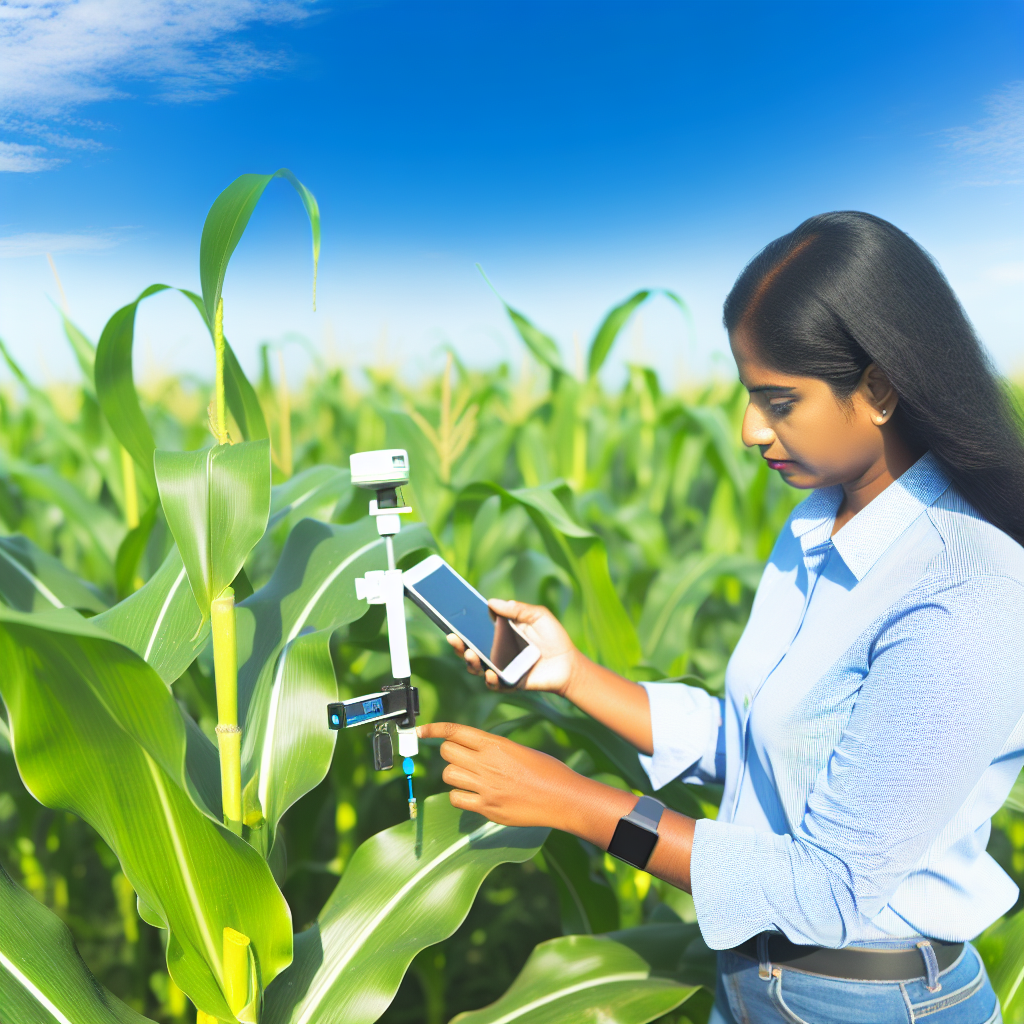
Optical Sensors: Assessing Crop Health and Growth
Overview of Optical Sensors
Optical sensors play a crucial role in modern agriculture.
They utilize light to evaluate crop health.
Farmers can monitor various growth parameters with ease.
These sensors analyze plant reflectance and absorption.
Types of Optical Sensors
Several types of optical sensors exist on the market today.
Each type serves a unique purpose in crop monitoring.
- Multispectral Sensors
- Hyperspectral Sensors
- RGB Cameras
Multispectral Sensors
Multispectral sensors capture data across specific wavelength bands.
They provide insights into crop health and moisture levels.
Farmers benefit from mapping variations in vegetation indices.
Hyperspectral Sensors
Hyperspectral sensors offer a broader range of wavelengths than multispectral sensors.
Showcase Your Farming Business
Publish your professional farming services profile on our blog for a one-time fee of $200 and reach a dedicated audience of farmers and agribusiness owners.
Publish Your ProfileThey provide detailed information about plant stress and nutrient levels.
This data aids in making informed agronomic decisions.
RGB Cameras
RGB cameras are accessible and versatile for crop monitoring.
They capture high-resolution images for visual assessments.
This type of sensor is useful in assessing plant population and growth uniformity.
Benefits of Using Optical Sensors
Optical sensors enhance precision agriculture techniques.
They allow for timely interventions based on accurate data.
Farmers can reduce inputs and maximize yields.
Moreover, these sensors contribute to sustainable farming practices.
Challenges and Considerations
Implementing optical sensors also poses challenges.
Initial costs can be significant for some farmers.
Additionally, the interpretation of sensor data requires expertise.
Farmers must continuously adapt to evolving technologies.
Integrating Sensors with IoT for Real-Time Data Management
Understanding IoT and Its Importance
The Internet of Things (IoT) connects devices for seamless communication.
This technology enhances agricultural practices through real-time data management.
Moreover, IoT enables farmers to monitor crops efficiently.
Types of Sensors Used in Crop Monitoring
Several types of sensors facilitate effective crop monitoring.
Soil moisture sensors track water levels in the soil.
Temperature sensors measure air and soil temperatures.
Light sensors gauge sunlight exposure on crops.
Pest detection sensors identify potential infestations early.
Benefits of Sensor Integration
Integrating sensors with IoT provides numerous benefits.
Farmers receive real-time data directly on their devices.
This data supports informed decision-making for crop management.
Additionally, it reduces manual labor and resource wastage.
Implementation Strategies
Successful implementation of sensors requires a strategic approach.
Farmers should assess their specific crop needs first.
Next, selecting compatible sensors is crucial for integration.
Data analytics platforms can enhance interpretation of collected data.
Challenges in Integration
While beneficial, challenges exist in sensor integration.
Data security remains a top concern among farmers.
Additionally, the cost of advanced sensors can be prohibitive.
Maintenance of the equipment is another important consideration.
Looking Ahead
As technology advances, crop monitoring will evolve further.
Emerging trends suggest enhanced sensor capabilities and accuracy.
Farmers must stay updated to take full advantage of innovations.
Ultimately, integrating sensors with IoT will reshape agriculture.
Case Studies: Successful Implementation of Crop Monitoring Sensors
Case Study from Green Fields Farms
Green Fields Farms implemented soil moisture sensors in their cornfields.
This technology helped them track moisture levels accurately.
As a result, they optimized irrigation schedules dramatically.
Showcase Your Farming Business
Publish your professional farming services profile on our blog for a one-time fee of $200 and reach a dedicated audience of farmers and agribusiness owners.
Publish Your ProfileThe farm experienced a 20% reduction in water usage.
Consequently, their corn yield increased by 15%.
Implementation at Harvest Innovations
Harvest Innovations focused on using thermal imaging sensors.
These sensors allowed them to identify heat stress in crops.
By monitoring crop health more effectively, they adjusted their fertilization strategies.
This led to healthier plants and improved overall yields.
After one season, they reported a 25% increase in productivity.
Agritech Solutions and Their Growers
Agritech Solutions partnered with local growers to implement drone surveillance.
They captured high-resolution aerial images of vast fields.
This approach provided insights into crop health and growth patterns.
Moreover, growers could detect pest outbreaks early.
As a result, they reduced pesticide use by 30% and increased profit margins.
FarmTech’s Role in Precision Agriculture
FarmTech introduced data analytics with crop monitoring systems.
They analyzed data from various sensors to recommend actionable insights.
Farmers appreciated being able to make data-driven decisions.
This led to a more efficient allocation of resources.
Eventually, participating farms reported an overall yield improvement of 18%.
Future Trends in Crop Monitoring Technology
Integration of Artificial Intelligence
Artificial intelligence is transforming crop monitoring significantly.
It enhances data analysis and decision-making processes.
Farmers can implement predictive analytics for better yield forecasts.
Additionally, AI-driven sensors can optimize resource usage effectively.
Advancements in Remote Sensing
Remote sensing technology continues to evolve rapidly.
It allows for comprehensive analysis of crop health from a distance.
Satellites and drones play a crucial role in this development.
The high-resolution imagery aids in monitoring field conditions accurately.
Emphasis on Precision Agriculture
Precision agriculture is gaining traction among modern farmers.
This approach focuses on maximizing output while minimizing inputs.
Crop monitoring sensors help achieve this goal efficiently.
Farmers utilize these tools to apply fertilizers and water appropriately.
Development of IoT Sensors
The Internet of Things (IoT) is revolutionizing agriculture.
IoT sensors collect real-time data from the fields continuously.
This data provides insights into soil quality and moisture levels.
Consequently, farmers can make informed decisions promptly.
Enhanced Data Analytics
Advanced analytics tools are shaping the future of crop monitoring.
Data-driven insights enable proactive management of crops.
Machine learning algorithms can identify patterns and trends effectively.
These innovations pave the way for more sustainable farming practices.
Focus on Sustainability
Sustainability is a key focus for future crop monitoring technologies.
Farmers aim to reduce their carbon footprint and improve eco-friendliness.
Sensors can monitor environmental impact and resource consumption.
Showcase Your Farming Business
Publish your professional farming services profile on our blog for a one-time fee of $200 and reach a dedicated audience of farmers and agribusiness owners.
Publish Your ProfileAs a result, agricultural practices become more responsible and efficient.
Additional Resources
Precision Agriculture: Benefits and Challenges for Technology …
Internet of Things and smart sensors in agriculture: Scopes and …

